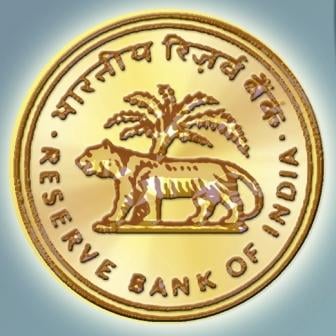How RBI regulates Commercial Banks?
One of the most important functions of RBI is to work as regulator and supervisor of financial system. The financial system in India includes Commercial Banks, Regional Rural Banks, Local Area Banks, Cooperative Banks, Financial Institutions including Development Financial Institutions (DFIs) and Non-Banking Financial Companies.
RBI derives its regulating powers for Indian Banking System from the provisions of the Banking Regulation Act 1949. For other entities, it derives power from the RBI act 1934. The objectives of this function are to protect the interest of the depositors and maintain the safety and soundness of the banking and Financial System of the country.
After the liberalization of the Indian Economy and Banking reforms in 1990s, the amplitude of the supervisory functions of RBI became has grown enormously. To keep up with the added importance of this function, the Board of Financial Supervision was constituted in 1994. Since then, BFS is working as the main guiding force behind RBI’s regulatory and supervisory initiatives.
Further, various departments have been created for effective supervisory functions. For example:
- Department of Banking Operations and Development (DBOD) frames regulations for commercial banks.
- Department of Banking Supervision (DBS) undertakes supervision of commercial banks, including the local area banks and all-India financial institutions.
- Department of Non-Banking Supervision (DNBS) regulates and supervises the Non-Banking Financial Companies (NBFCs)
- Urban Banks Department (UBD) regulates and supervises the Urban Cooperative Banks (UCBs).
- Regulation of Regional Rural Banks (RRBs) and the Rural Cooperative Banks is done by Rural Planning and Credit Department (RPCD); while the supervision of these comes under NABARD.
Licensing Requirements
To do a business of commercial banking in India, whether it is India or Foreign, a license from RBI is required. Opening of Branches is handled by the Branch Authorization Policy. At present, Indian banks no longer require a license from the Reserve Bank for opening a branch at a place with population of below 50,000.
Corporate Governance in Banks
One of the policy objectives of RBI is to ensure high-quality corporate governance in banks. RBI has issued guidelines for ‘fit and proper’ criteria for director of banks. One of these guidelines is that the directors of the banks should have special knowledge / experience in the various banking related areas. RBI can also appoint additional directors to the board of a banking company.
Statutory Pre-emptions
Each commercial bank is required to maintain certain portion of their Net Demand and Time Liabilities (NDTL) in the form of cash with the Reserve Bank, called Cash Reserve Ratio (CRR) and in the form of investment in approved securities, called Statutory Liquidity Ratio (SLR). These are called statutory Pre-emptions.
Interest Rates
The interest rates on most of the categories of deposits and lending transactions have been deregulated and are largely determined by banks. Reserve Bank regulates the interest rates on savings bank accounts and deposits of non-resident Indians (NRI), small loans up to rupees two lakh, export credits and a few other categories of advances.
Prudential Norms
Prudential Norms refers to ideal / responsible norms maintained by the banks. RBI issues “Prudential Norms” to be followed by the commercial banks to strengthen the balance sheets of banks. Some of them are related to income recognition, asset classification and provisioning, capital adequacy, investments portfolio and capital market exposures. RBI has issued its guidelines under the Basel II for risk management.
Disclosure Norms
One of the important tools for marketing discipline is to maintain public disclosure of relevant information. As per RBI’s directives, the banks are required to make disclosures of their annual reports and some other documents about their capital adequacy, asset quality, liquidity, earnings aspects and penalties imposed on them by the regulator.
Anti-Money Laundering Norms
KYC norms ( Know Your Customer) Anti- Money Laundering (AML) and Combating Financing of Terrorism (CFT) guidelines are some of the major issues on which RBI keeps issuing its norms and guidelines.
Protection of Small Depositors
RBI has set up the Deposit Insurance and Credit Guarantee Corporation (DICGC) to protect the interest of small depositors, in case of bank failure. The DICGC provides insurance cover to all eligible bank depositors up to Rs.1 lakh per depositor per bank.
Para – banking Activities
Parabanking activities are those activities which don’t come under the traditional banking activities. Examples of such activities are asset management, mutual funds business, insurance business, merchant banking activities, factoring services, venture capital, card business, equity participation in venture funds and leasing. The RBI has permitted banks to under take these activities under the guidelines issued by it from time to time.
Annual Onsite Inspection
RBI undertakes annual on-site inspection of banks to assess their financial health and to evaluate their performance in terms of quality of management, capital adequacy, asset quality, earnings, liquidity position as well as internal control systems.
Based on the findings of the inspection, banks are assigned supervisory ratings based on the CAMELS rating.
OSMOS
OSMOS refers to Off Site Surveillance and Monitoring System. The RBI requires banks to submit detailed and structured information periodically under OSMOS. On the basis of OSMOS, RBI analyzes the health of the banks.



UD
September 3, 2014 at 5:23 pmSAVING BANK INTEREST RATE REGULATE BY BANK ITSELF